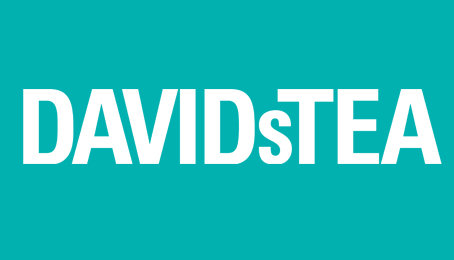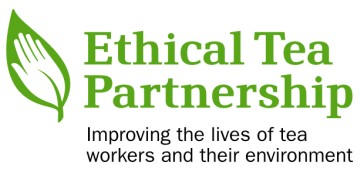 A Good Omen for Specialty Tea
A Good Omen for Specialty Tea
Strip away all the legal filings and investment analysis and what you see in the DAVIDsTEA Initial Public Offering (IPO) today is a positive and persuasive vision of the future of specialty tea retail.
DAVIDsTEA is the latest example of a home-grown venture where the founders, inspired by a love of specialty tea, grew their small shops into a bankable business. Like T2 in Australia, Teaopia in Canada and Teavana in Atlanta, Ga., DAVIDsTEA demonstrated an enviable trajectory from the onset by concentrating on developing innovative herbal blends, loose leaf in packets and selling premium tea online.
In its regulatory filings the company points to 22 consecutive quarters of same store sales growth while constructing 30 new stores a year. DAVIDsTEA is seeking at least $77 million to pay down debt and construct a total of 530 stores. The company reported a $6 million profit on $142 million in sales last year with an annual growth rate of 36%.
Excitement is building for the offering which has been chosen “pick of the week” by several analysts including lead underwriters Goldman Sachs and JPMorgan Chase. DAVIDsTEA upped the initial offering price from $18 to $19 per share Thursday and will likely see a market value vote of confidence of up to $500 million by the end of the week.
Jurgen Link is a pioneer in specialty tea. In 1996 he founded SpecialTeas, Inc. a tea import, wholesale and e-commerce company. In 2005 SpecialTeas merged with leading tea retailer Teavana Corp. (then with 28 stores) to form Teavana Holdings. As president of SpecialTeas and senior vice president of logistics and distribution and Board Member of Teavana Corp., Link lead sourcing, logistics, store distribution and e-commerce fulfillment. He was a member of the executive team during the Teavana IPO and subsequent acquisition by Starbucks.
“In 1996 it was impossible to find special tea in this country,” he recalls. “I grew up in Germany and Germany, like the U.S., is a coffee drinking country but we could always find a tea room with good quality tea in every city of say, 25,000,” he said. That is still not possible in the U.S., said Link.
“That shows me how much more potential we have. What we have available now is merely scratching the surface,” said Link. “Howard Schultz [Starbucks CEO] is right, there is a ‘huge opportunity,’” he added. Retail is changing “but it has not changed enough,” he said. “There needs to be a whole lot more distribution and many, many more outlets, more points of sale and a lot more education,” said Link.
Does DAVIDsTEA hold the key?
“DAVIDsTEA is successfully building a chain of tea stores offering bulk teas, but the jury is still out on the right tea bar or tea room concept,” he explains. “The whole bar/tearoom channel is still in flux because no one has yet discovered a concept that is truly scalable — nobody, anywhere. That does not mean it is not possible,” he said.
“I am very interested to see what Starbucks will do because once the concept is discovered there will be another big surge in growth,” he said. “I think Starbucks has the resources to do it. He [Schultz] needs to invent something that has not been invented,” said Link.
Timing is good for a brisk opening day. DAVIDsTEA reported $35.4 million in sales for the quarter ending May 2, an increase of 28% due in part to an average ticket increase of 7.2%. Comparable store sales grew 6.3% in the quarter. Margins are improving. Rival Teavana, which is twice the size of DAVIDsTEA and benefits from sales at 11,000 Starbucks locations, reported 15% growth in tea sales during the same period.
Click here to see the company’s full financials.
DAVIDsTEA now operates 161 stores. Among those open at least one year, revenue averages $1 million per store. Given the small retail footprint (albeit expensive) and small staff (typically three to five) specialty tea demonstrates a significant return on investment.
| Store Count |
Canada |
US |
Total |
| 2008 |
1 |
|
1 |
| 2011 |
68 |
2 |
70 |
| 2012 |
91 |
14 |
105 |
| 2013 |
108 |
16 |
124 |
| 2014 |
130 |
24 |
154 |
| 2015* |
136 |
25 |
|
*As of May 2015
More important, in the world of beverage retail, scale plays a huge role in profitability. Get the menu right, secure good locations and you can expand, and expand, and expand.
DAVIDsTEA’s biggest opportunity is in the U.S. in cities along the northern border like Chicago as well as the coasts. It operates five stores in Illinois, five stores in New York and one in New Jersey; five in Massachusetts and one in Connecticut with six in California. Its greatest concentration is in the Canadian provinces of Ontario (44), Quebec (25) and British Columbia (25). The company intends to build 30 stores in Canada this year and 15 in the U.S. with a long-term goal of 40 to 50 annually to reach 530 in the next five years. Rival Teavana currently operates 330 stores with plans to build 1,000, according to Starbucks, which acquired the venture in 2012.
Tea retail will not experience the meteoric pace of coffee shop expansion in the 1990s, when Starbucks was opening an average of two stores per day, but growth has been steady, averaging two new chain stores a week in a highly fragmented market. Tea retailing tea is less lucrative than coffee in terms of scale but with better margins. Increasing the DAVIDsTEA price to $19 a share reflects the momentum building behind this offering but keep in mind that shares of Starbucks sell for around $50.
DAVIDsTEA sells 150 different type of tea, introducing 30 annually. Popularity is fleeting for most but innovation stimulates sales. The company earns 68% of its revenue from the sale of loose leaf teas and herbals, mainly packets priced around $8-$12 with 22% of total sales from teaware and utensils. Food and beverage sales account for 10% of revenue. Only 7.9% is from online transactions (2014) which have improved significantly from the 2.7% reported in 2010 but remain below the 10% norm for brick and mortar operations with online offerings. DAVIDsTea predicts this number will rise to 15% of sales with additional investment in the company’s website and online marketing.
In July 2011 Teavana generated $123 million from its initial listing on the NY Stock Exchange. It had 284 stores at the time and was averaging $862,000 in sales per location. The company operated 161 stores in 35 states on the day the IPO was funded and was experiencing nearly identical sales growth that reported by DAVIDsTEA for the quarter preceding the IPO, according to a Goldman Sachs analyst posted to Seeking Alpha.
Will success lead to acquisition? Teavana had better margins than Starbucks at the time it was purchased. DAVIDsTEA reports comparable store growth to that of Starbucks at seven years of age, according to a cover story published in Specialty Coffee Retailer.
Starbucks has doubled tea sales since introducing Teavana as a replacement for Tazo in its coffee stores. The greatest sales gains are in shaken iced tea and tea lattes. Meanwhile sales of Tazo, now a CPG brand, top $1 billion.
In my view the company will use the IPO money to press its advantage in the U.S. while solidifying its hold in Canada making the Great White North a less desirable expansion target for Teavana (which is eying Asian expansion and growth in the Middle East).
Once the management at DAVIDsTEA demonstrates to the public that the firm has legs to run, expect an inquiry from Unilever which opened its first U.S. tea store in New York last year and its fourth T2 specialty tea shop in London. The Melbourne-based T2 operates 50 stores in Australia. DAVIDsTEA is a good fit for the ambitions of Unilever’s president for refreshment Kevin Havelock. Unilever, owner of Lipton and the world’s largest tea retailer, is a $75 billion company with a growing appetite for specialty tea.
Sylvain Toutant, who has been president and CEO of DAVIDsTEA since 2014 (leaving Keurig Green Mountain as COO of the Canada subsidiary last May), answers to a board of aggressive executives with a history of building companies to sell.
Expansion through franchise partners is another option. Several of Teavana’s overseas stores and those in Mexico are franchised.
Operating a business largely consisting of franchised stores is much different and less profitable than corporate-owned ventures. In a report published by Entrepreneur magazine Franchise Business Review found that “51.5% of food franchises earn profits of less than $50,000 a year; roughly 7% top $250,000, with the average profit for all restaurants coming in at $82,033.”
Tea’s high margins, an exclusive collection of teaware and utensils and services like monthly delivery subscriptions generate sales at a mall location equal to or even greater than franchise chocolatier Godiva – one of the most profitable franchises with 217 locations in the U.S. and 275 overseas.
Godiva generated $765 million at 10,000 locations in 2013 with U.S. retail stores averaging more than $1 million per year. “Each of these stores makes 37% more sales and posts 248% more profits,” since 2008, according to Godiva’s owners. Production capacity of the U.S. factories has increased 73% since the company was acquired for $850 million by Yildiz Holdings, as reported by the Hürriyet Daily News.
The IPO is hot proving bulk tea vendors are an exciting opportunity but if DAVIDsTEA wishes to remain independent and eventually dominate the segment it must also discover the elusive tea bar concept that will scale.
? ? ?
Tea Biz serves a core audience of beverage professionals in the belief that insightful journalism informs good decision-making in business. Tea Biz reports what matters along the entire supply chain, emphasizing trustworthy sources and sound market research while discarding fluff and ignoring puffery.
Tea Biz posts are available to use in your company newsletter or website. Purchase reprint and distribution rights for single articles or commission original content. Click here for details.










